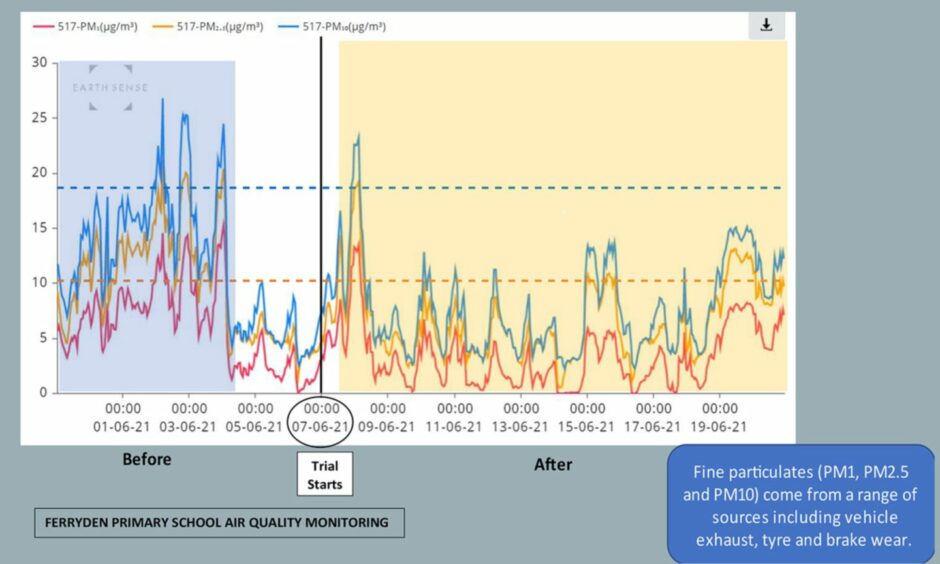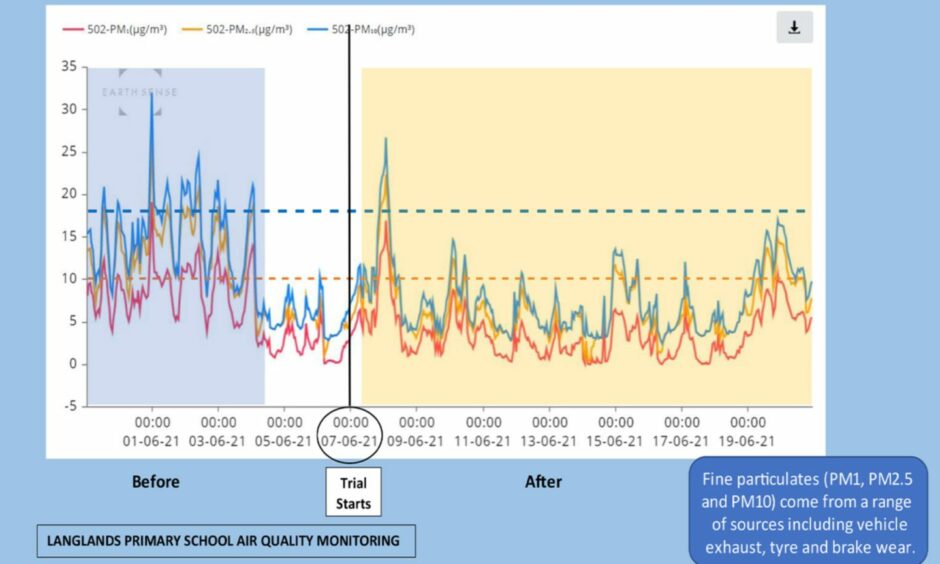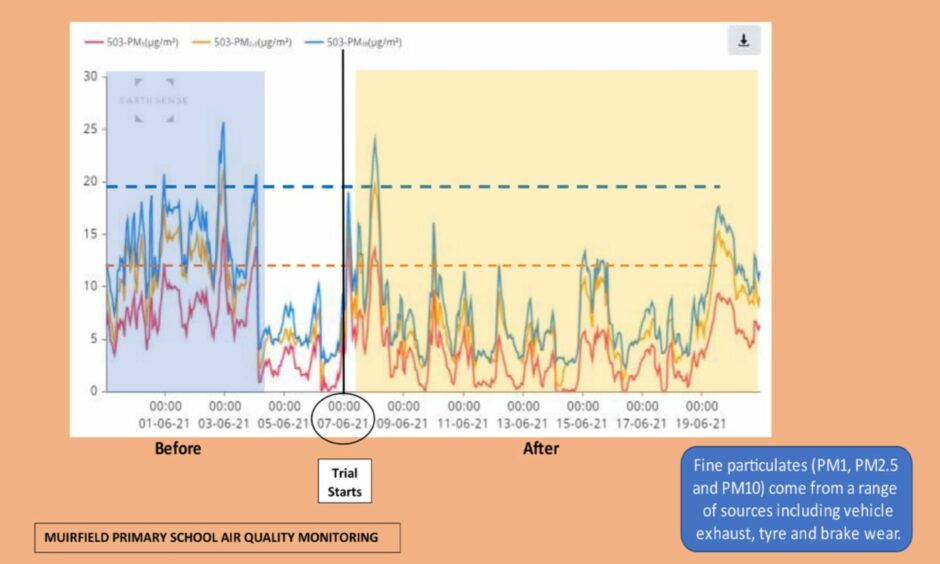Permanent traffic exclusion zones around Angus schools are to be recommended for approval by councillors.
The move follows a successful trial at three schools – where the number of vehicles around one school dropped by 95% at afternoon collection time.
Angus Council’s communities committee will be asked on Tuesday to approve permanent traffic exclusion zones around:
- Ferryden Primary School, Montrose
- Langlands Primary School, Forfar
- Muirfield Primary School, Arbroath.
The committee will also be asked to approve ‘experimental’ traffic exclusion zones around five further schools. Those are:
- Andover Primary School, Brechin
- South Esk Primary School, Montrose
- Letham Primary School, Carnoustie
- Liff Primary School, Carnoustie
- Carlogie Primary School, Carnoustie
The recommendations follow successful reductions to air pollution around the first three listed schools by introducing temporary traffic exclusion zones.
A report prepared for the committee reveals data from air monitors and highlights improvements in road safety for children around schools and active lifestyles.
The data
Ferryden, Langlands and Muirfield primaries have all had temporary traffic exclusion zones and air monitors outside their schools since August last year.

This means that during peak hours – before school opening and after school finishing time – roads directly outside the schools were closed to all traffic except blue badge holders, emergency vehicles and school buses.
Air pollution has been monitored and analysed by Scottish Environment Protection Agency (SEPA) since installation and the results show a “profound reduction in fine particulate matter”, the report states.
As a result, traffic around Ferryden primary at morning drop-off time has been reduced by 37.5% and by 68.5% at afternoon pick-up time.

Around Langlands, vehicle numbers have been reduced by 22.3% in the morning and 13.5% in the afternoon.
And around Muirfield, traffic reduction was 85% during the morning school run and a 95% reduction was seen at afternoon collection periods.
Further benefits
Nearby areas for parking were identified, however the hope was that exclusion zones would encourage parents to find alternative ways for children to get to school.
Walter Scott, service leader for roads and transportation at Angus Council, wrote in the report: “Effective ‘School Exclusion Zones’ can help encourage active lifestyles, increase in walking and cycling journeys, fewer car trips and improved road safety outside schools during peak periods due to less motor vehicle movements. They can also lead to reductions in child obesity.”

It is also proposed that reward schemes such as the Living Streets WoW (Walk Once a Week) initiative would be considered through the work of the road safety member officer working group.
This is a year-round incentive scheme which rewards children walking to school at least once a week with a collectible WoW badge.
The report also adds that pedestrian and cycle training and the provision of additional cycle and scooter parking could also be considered.










